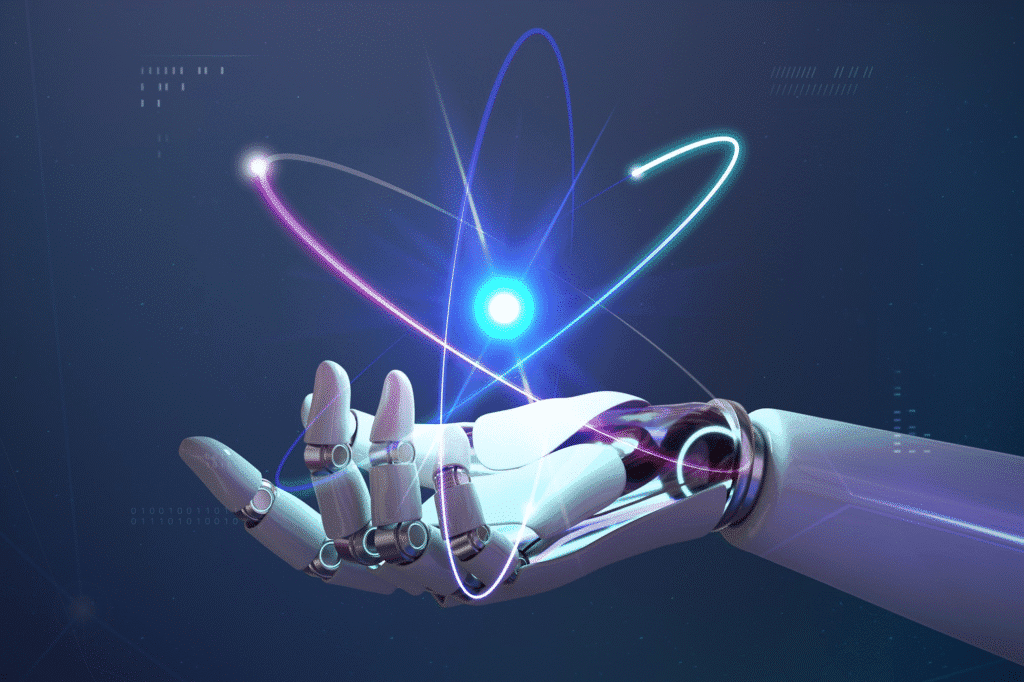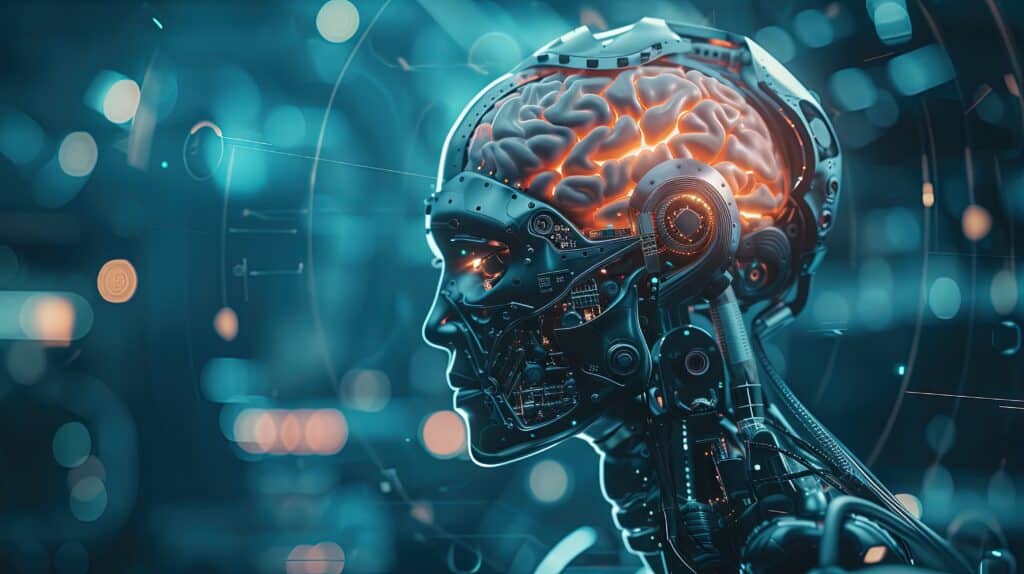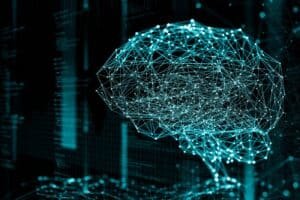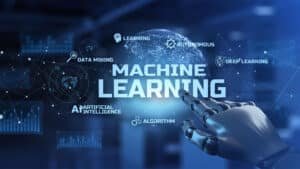If we are going to talk about the future of big data, then we need to start at the beginning. In the early 2000s, the advancement in software and hardware technologies enabled organizations to handle large amounts of disorganized data. Due to this data surge, open-source communities began designing big data frameworks to collect and process the data. These frameworks could distribute storage and process big data sets across computer networks.
Jumping back to today, organizations collect a vast amount of data from multiple sources, such as social media, IoT devices, and customer transactions. Having access to this huge amount of data is not enough, unless you utilize big data analytics to make it actionable. And for that, the best option available in 2025 is artificial intelligence (AI) and machine learning (ML).
When AI is here to increase productivity and make jobs more prudent and defined, then why not utilize it in big data analytics? McKinsey estimates that utilizing generative AI could contribute nearly $2.6 to $4.4 trillion to the global economy annually across 63 use cases. AI and ML are transforming the way we view data, simplifying complex tasks and uncovering patterns that yield predictive insights.

In the following parts, I will be exploring what big data analytics is, how AI and ML are applicable in big data analytics, the benefits that organizations can reap, and use cases of AI and ML in big data analytics.
What is Big Data Analytics?
Technically speaking, big data analytics is the methodical analysis and processing of huge amounts of data and complicated data sets (big data) to extract useful insights.
Using big data analytics, the raw data in organizations is analyzed to unveil patterns, trends, and correlations to accelerate data-driven decision-making. Using these advanced analytics, businesses can plan their actionables, including designing impactful marketing campaigns, enhancing customer relationships, understanding market trends, and other crucial business metrics.
Four major methods for data analysis:
- Descriptive analytics – In this step, it is all about briefing and describing old data to understand the basic aspects.
- Diagnostic analytics – In this stage, diagnostic analytics goes deeper to understand trends and root patterns in data from descriptive analysis.
- Predictive analytics – As the name suggests, it predicts trends by using statistical modeling, machine learning, and historical data.
- Prescriptive analytics – The final step, post-predictive analytics, offers recommendations for future actions based on insights from the previous analysis.
Merging Big Data Analytics With AI & ML

Though big data analytics is already a productive technology in itself, the analytic techniques can struggle to scale with the escalating data. This is when merging AI and ML with data analytics can be highly beneficial – it can grow and drive automation for analytics and complicated data challenges.
Almost 402.74 million terabytes of data are generated every day, and 90% of all the existing data is produced within the last 2 years! As per projections, the number is only going to rise exponentially.
Merging artificial intelligence and machine learning with data analytics is going to make everyone’s job easier, cut costs, and save time for organizations. How? On average, a data scientist spends around 8 hours a day cleaning and processing data manually. Leveraging machine learning models takes less than an hour to do the same. The other 7 hours can be spent on interpreting and analyzing the results (which needs human intervention), driving productivity and efficiency. According to Luzmo, 54% businesses state that integrating AI has saved them money.
Leveraging traditional analytics techniques can be quite the challenge. Another Luzmo research shows that 51% people are frustrated with how dashboards do not allow meaningful data interaction, and another 36% aren’t happy with the speed of their dashboards. These issues not only slow down individual work, but retards business growth and expansion.
What’s the solution?
With the above insights, we understand that users are not fully satisfied with traditional analytics and want it to go beyond static charts. That’s where merging AI and ML with data analytics can come in handy.
How AI & ML Can Help in Big Data Analytics?

When combined, both AI and ML can integrate with big data to automate the overall process, offering accuracy in data insights and predictions like never before. Businesses can utilize all three of these revolutionary technologies to:
- Automate Data Processing
Big data is received by organizations mostly in the form of posts from social media, data emails, videos, and other forms. Sorting these unstructured data manually is near impossible. Using AI-driven algorithms assists in cleaning, categorizing, and organizing data to get it ready into datasets for analysis. E.g., natural language processing (NLP) can allow real-time analysis and sorting of textual data.
- Get Improved Predictive Analytics
ML models are very useful when it comes to predictive analytics. In organizations, historical data can be fed to an ML algorithm to get an accurate look into the future. This can include predicting customer behaviour, equipment function, upcoming market trends, etc. Using ML algorithms makes data prediction more accurate and efficient in comparison to traditional predictive methods.
- Make Real-Time Decisions
Since AI algorithms can work with live data analysis and processing, they can go through real-time data from IoT devices. Like, these algorithms can identify real-time issues, if any, in real-time. This aspect can be highly useful in sensitive industries like healthcare and finance, where quick and effective data decisions could save lives or stop any mishaps.
- Understand Data Patterns
Humans can’t identify surfacing patterns or correlations in large volumes of big data. This is when ML algorithms can be useful. Using ML, organizations can get innovative insights, like operational issues, supply chain optimization, and others. AI-driven data insights are much more comprehensive for companies than any other method.
Benefits of AI and ML in Big Data Analytics
1. Accurate Data Analysis
Data analysis using AI and ML algorithms is unbiased and without any human error. Thus making predictions more accurate, accelerating insightful decision-making, and making organizations rely more confidently on the insights.
2. Cost-Effective
When it comes to automating the process of data analysis, with AI and ML, there is a reduced need for manual intervention. This reduces the time to accumulate information, thus decreasing operational costs and enhancing efficiency.
3. Quicker & Actionable Insights
Processing big data manually can take months, eliminating it as an effective option. AI-driven analytics transform data into insights within minutes or a few hours, depending on the amount, making organizations take quicker decisions and stay ahead of the competition.
Also, ML algorithms can efficiently trace hidden patterns in large data pools to offer informed decision-making when it comes to planning marketing campaigns, enhancing customer experience, and streamlining in-house operations.
4. Highly Scalable
Data growth is directly linked to business growth. AI and ML algorithms are gaining popularity as they can scale along with the growth of your business. They can handle huge datasets easily, allowing your business to process big data without compromising performance.
What are the Use Cases of AI & ML in Big Data Analytics?
1. Financial Institutions
AI and ML-driven data analytics are sorting things out in financial institutions. By analyzing huge datasets and advanced algorithms, AI and ML assist financial institutions to:
- Detect and prevent fraudulent activities.
- Offer personalization and enhance customer experience.
- In credit scoring and loan underwriting.
- To accelerate regulatory compliance and reporting.
- Allows data-powered decision-making and risk management.
2. Healthcare
Artificial intelligence, along with ML, is improving big data analytics within healthcare institutions in various ways, like:
- Predictive analytics for preventing diseases.
- Diagnostics driven by AI.
- Precision medicine and customized treatment.
- Optimizing operations in hospitals.
- Facilitating real-time care and remote monitoring of patients.
- Discovering and developing innovative drugs.
3. E-Commerce & Retail
AI and ML-driven data analysis is proving to be highly beneficial in the modern e-commerce and retail industry. Let’s understand how:
- Analyzing browsing history to personalize product recommendations.
- Adjusting pricing and promotions to suit the latest customer demand and behaviour.
- Segmenting customers and enhancing targeted marketing campaigns.
- Improving customer interaction through AI chatbots and customer support.
- Forecasting demand and managing inventory.
4. Manufacturing
Using AI and ML algorithms, manufacturers can achieve automation and scalability. Using AI and ML can help to:
- Predict maintenance.
- Control quality and detect issues like defects.
- Optimize and automate processes.
- Optimize inventory and supply chain.
- Develop and test product designs.
- Create digital twins of the production process to help with live simulation, optimization, and monitoring.
How AI & ML are Making Big Data Analytics Smarter?
Integrating artificial intelligence and machine learning in big data analytics is driving immense growth across global industries in 2025. By now, you must have understood how these technologies are enabling innovation by automating the overall data processing, recognizing data patterns and predicting market trends, natural language processing (NLP), detecting issues, and preventing fraud in critical industries, among numerous others.
From static reporting, AI and ML have transformed big data analytics into dynamic, scalable, automated, accurate, and insightful systems that are accelerating growth, productivity, and efficiency in 2025 and the years to come.
Related: Top 10 Blockchain Technology Trends For 2025
Related: What’s Importance of Analytical Intelligence in Today’s Workplace?







